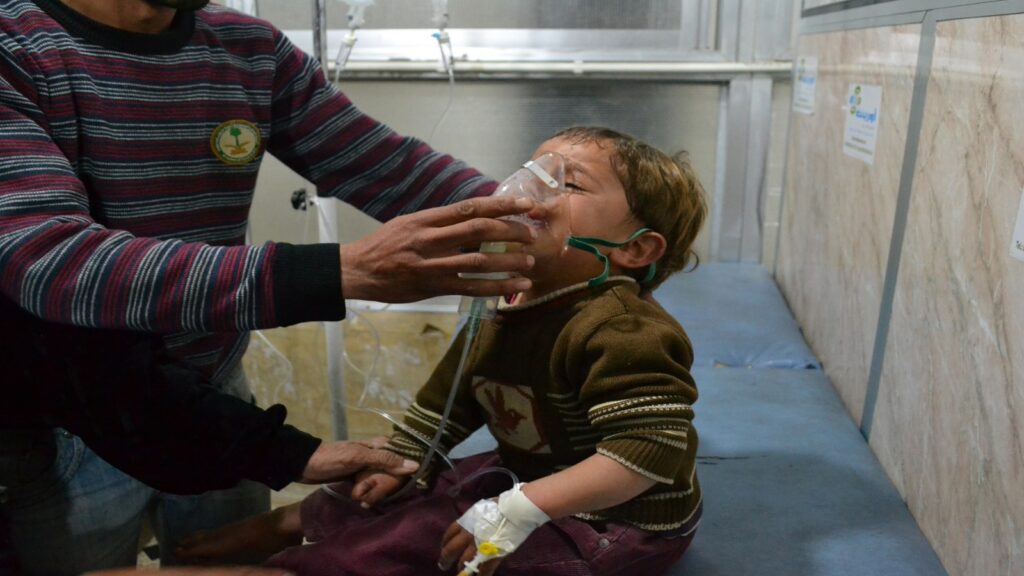Crisis In Syria
Over one million people have been killed, and half of the population has been displaced, with nearly 6.2 million people displaced internally and over 5.6 million people seeking refuge in neighboring countries and beyond. It is estimated that more than 12.2 million people are in dire need of humanitarian assistance inside Syria. The massive influx of refugees has created a strain on Syria’s neighboring countries, which have been forced to deal with extreme economic pressures, overcrowded hospitals, shortages of basic public services, and growing resentment among host communities.
In light of the unprecedented economic collapse in Syria, there has been a steep rise in hunger across the country, especially among children. At least 6.2 million children are at risk.
Illegal Use of Chemical Weapons in Syria
The unlawful use of chemical weapons in Syria has also continued with impunity.
It started in December 2012 in Homs where civilians were treated for symptoms indicative of chemical exposure. In March 2013, rockets filled with nerve agents were launched into besieged “East Ghouta”, killing over 1,300 people, many of whom were young children. It is the largest chemical attack in Syria since the beginning of the conflict. On April 4, 2017, residents of “Khan Sheikhoun” were victims of another deadly chemical weapons attack that killed at least 103 people, many of whom were also children.

Access to Humanitarian Assistance
Since the beginning of the official cross-border humanitarian response as a result of UNSC 2165 in 2014, it has served as a lifeline for millions of Syrians who struggle for humanitarian aid. In northwest Syria, where the vast majority of the population reside in informal settlements lacking the most basic necessities, including proper shelter, clean water, food, sanitation, and healthcare, the border is the main source of support for a population of 4 million people, including 2.7 million IDPs.
In 2020, the cross-border response reached an average of 2.37 million people each month, with some of the most far-reaching sectors including WASH, Food Security, and Education.
There is currently no alternative to cross-border aid in northwest Syria, and the continuation of its authorization is critical to the continued support of the vulnerable population in this area.
Children have been disproportionately affected by the ramifications of the protracted conflict.
Exposure to violence and trauma can result in behavioral problems for youth such as hyperactivity, aggression, or substance abuse, and it puts them at a higher risk for developing more
severe mental illnesses such as schizophrenia. Displacement has shattered many of their social systems. Children and youth usually rely on these systems for protection and guidance, and when they are interrupted, it can impact their social, emotional, and cognitive development in really profound ways (e.g., through the loss of family members and friends, loss of community safety, and rituals/traditions, interrupted schooling, mental distress of caregivers, altered parenting practices, loss of opportunities for advancement, etc).
